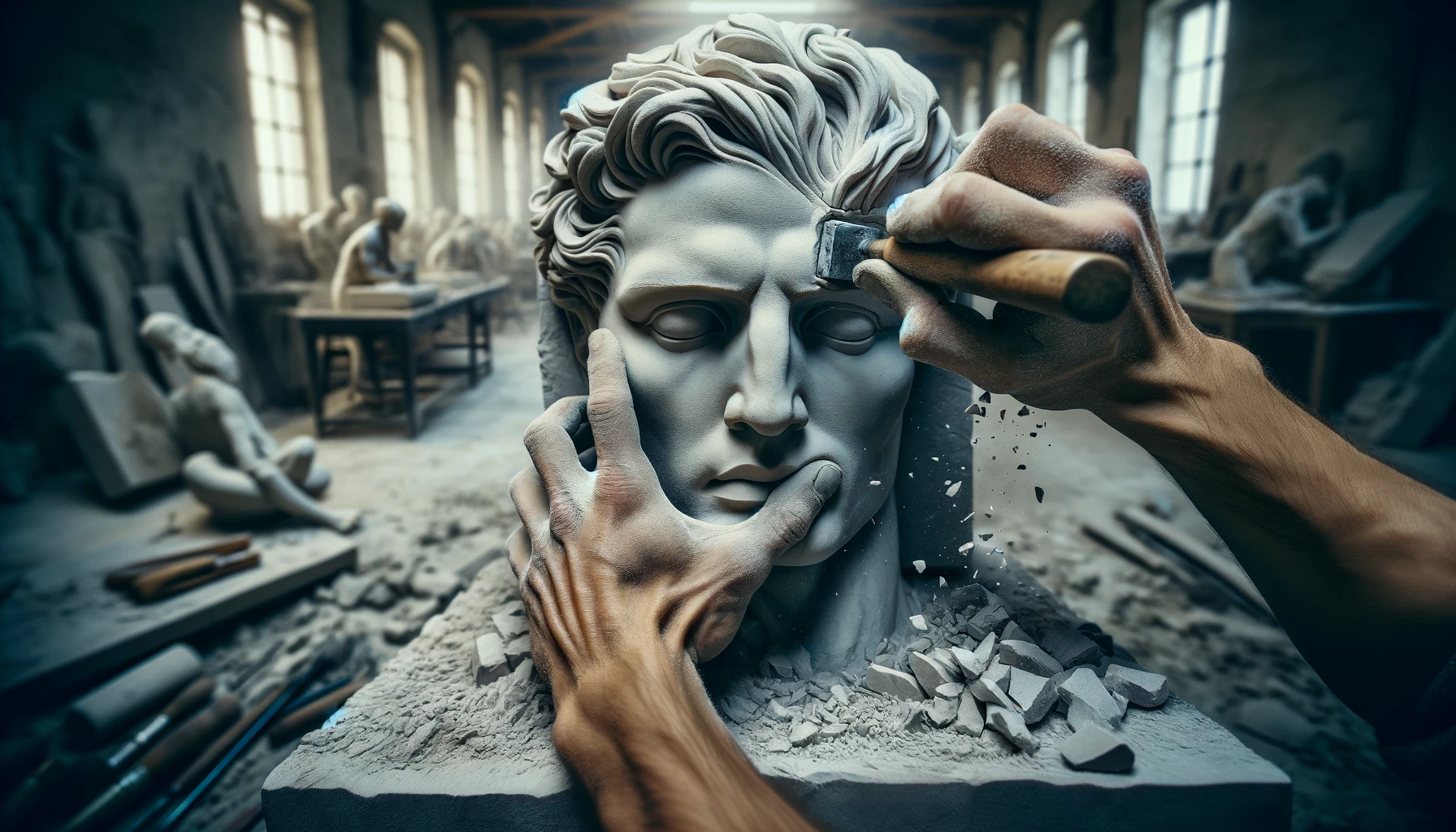Sculpture is an artistic expression that involves a deep understanding of space, form, and volume. Although they share fundamental principles, manual and digital sculpture present significant differences in their technique and creative process, as well as similarities in terms of skill and artistic vision. Here we explore these differences and similarities…
Traditional Sculpture
PROS
Limited Correction Capability: A wrong gesture can be irreversible, especially in materials such as stone or wood, which requires meticulous planning and precision in each movement…
Uniqueness in Each Piece: The marks of tools and small imperfections add character and uniqueness to each work, telling the story of its creation.
Intuitive Understanding of the Material: The sculptor develops a tangible relationship with the material, understanding its grain, texture, and resistance, which profoundly influences the creative process…
CONS
Irreversibility of Errors: A mistake may require starting over or significantly changing the original concept of the work…
Physical Limitations of the Material: Each material has its own restrictions, such as fragility or difficulty in detailing, which limit design possibilities.
Physical Demand: Manual sculpture is often a physically demanding process, which can be exhausting and require considerable endurance.

Digital Sculpture
PROS
Flexibility and Control: Errors and changes can be easily reversed or modified, allowing for a more experimental and less restrictive approach.
Precision and Detail: Digital tools offer extraordinary precision, allowing for intricate details and perfect symmetries that can be difficult to achieve by hand.
Faithful Reproduction: Once the digital design is completed, it can be replicated exactly on multiple occasions through techniques such as 3D printing or resin casting with silicone molds, for example.
CONS
Uniformity in Reproduction: The ability to replicate a piece exactly can detract from the uniqueness of each work. Although with the process of hand painting, each piece will be different and therefore unique.
Disconnection from the Material: The lack of direct contact with the material during the modeling process can result in a lesser sensory perception.
Technological Dependence: The process is tied to the availability, compatibility, and inherent problems of technology that can sometimes hinder the process.

Similarities between Manual and Digital Sculpture
Artistic Skill and Vision: Both forms of sculpture require a high level of technical skill and a clear artistic vision. Whether working stone with a chisel or modeling in a digital environment, the sculptor must have a profound understanding of form, proportion, and space.
Iterative Process: Both in manual and digital sculpture, the creative process is iterative. It involves constant evaluation and adjustment, either in response to the characteristics of the material or the possibilities offered by the software.
Problem-Solving: Sculptors, regardless of the medium, face challenges and must make critical decisions to overcome technical obstacles and achieve their artistic vision.
In summary, while manual and digital sculpture differ in technique and process, both disciplines share the need for sharp artistic and technical skills. Each offers its own advantages and challenges, and the choice between one or the other will depend on the artist’s vision, the demands of the project, and the nature of the expression being sought. Regardless of the method, the act of sculpting, whether through marble or pixels, remains a profound expression of the human spirit.





Hello there! This post couldn’t be written any better!
Reading through this post reminds me of my old room mate!
He always kept talking about this. I will forward this article to him.
Pretty sure he will have a good read. Many thanks for sharing!
thanks you for your feedback!